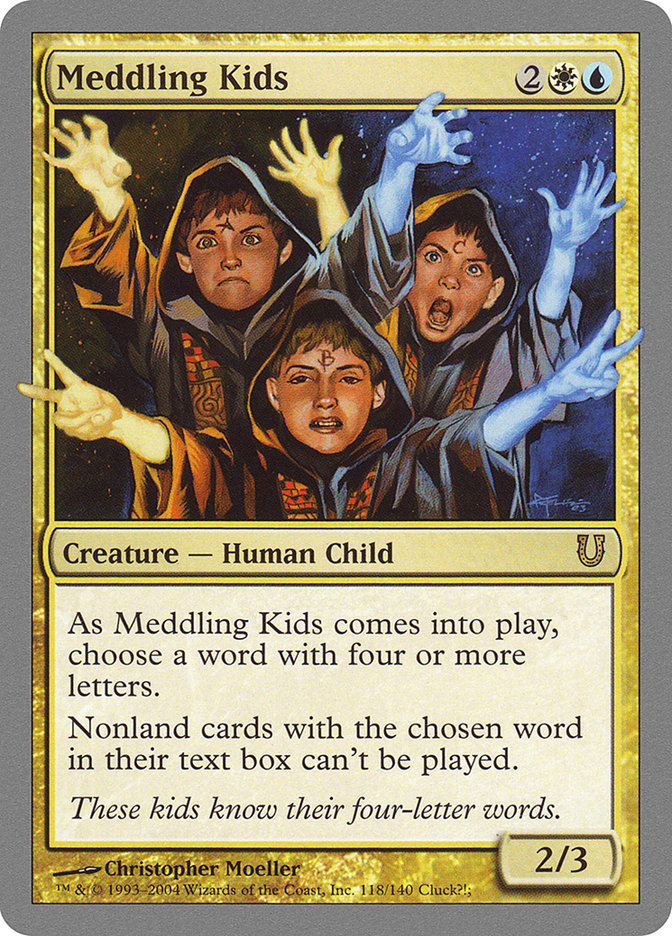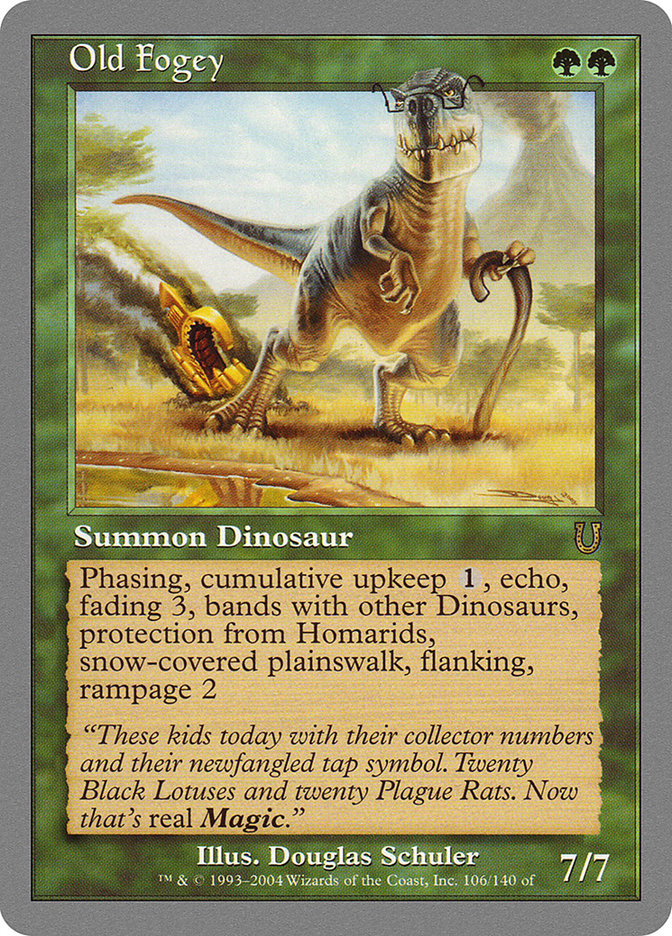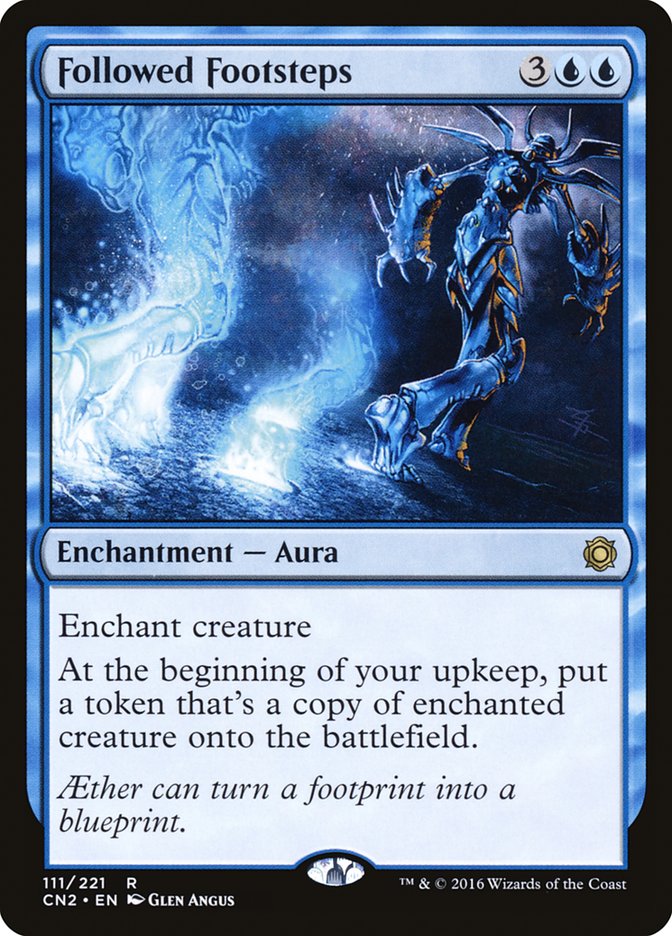[Jim Davis is a Premium columnist on StarCityGames.com. This piece is being put on the Select side of the website because of its excellent message and the belief that every player deserves immediate access to it. — Ed.]
Most articles by my fellow writers and me here on StarCityGames.com are about Magic cards, decks, and formats, but today I’d like to step back and talk about the Magic: The Gathering as a whole. As someone who has spent half my life playing Magic and invested in it fully as my sole source of income, the health and future of the game is very important to me. I’ll be going over three goals I think should be met when it comes to the growth of the game, and I strongly encourage everyone to get involved in the comments with your thoughts!
Grassroots Growth
A few weeks ago, Team MGG went to Parker, Banner, Kent, and Wayne Comics & Games in North Carolina for one of our “Challenge a Guru” events.
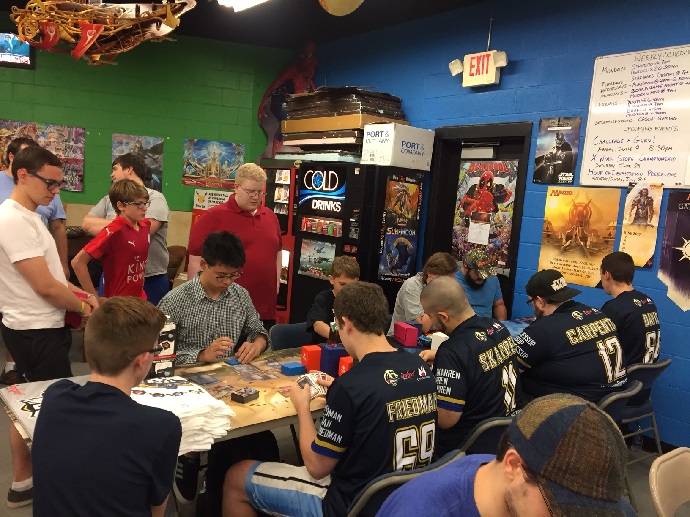
(For those unfamiliar with these events, the team goes to a local store the Friday before each SCG Tour stop for a fun promotional event put together by our team owners and partners.)
Over the last two years of doing these events, I’ve been to dozens of local stores all across the eastern half of the United States. I get to meet and talk to all sorts of different players and store owners/workers and it’s been a pretty awesome experience.
However, something was different about Parker, Banner, Kent, and Wayne Comics & Games, something that was readily apparent as soon as you walked in the door.
There were kids in the store!
This might not sound outlandish, but having been to many stores it is a fairly uncommon sight. The average age of most competitive Magic players is definitely in the twenty to 30 range, but as the years go on, that number feels like it is always rising.
Once a player really gets into Magic, they usually never quit for good, even if they may take breaks from time to time. This level of player retention is one of the main reasons why Magic is still so popular after almost a quarter-century, but it also means that acquisition isn’t as important as it may be for other games.
I spent a while talking with Matt Milburn, the owner of the store, about his events for kids and I was very impressed. Matt runs a kid’s FNM concurrent with the normal FNM; it starts a half hour earlier, only runs three rounds, and has an age limit of seventeen and under. He also offers to teach new kids how to play and has some “house” decks that newer players can play with before they have their own cards. There must have been around twenty kids playing in the event, having a great time.
This is crucial to the growth of the game.
Matt’s store is helping to foster a new generation of Magic players and helping to grow the game at a grassroots level. He is also doing so by creating an environment that is welcoming and inviting for younger players, and not doing so at the expense of his older, more experienced players.
As adults playing a “children’s card game,” we are often fond of letting people know that the average Magic tournament player is usually in their twenties or thirties; this helps people to understand the complexity of the game and how it should be taken as a serious endeavor no different from golf or chess. We also don’t want to necessarily want to be spending our Friday evenings or weekends with a bunch of kids. Resolving Brainstorm is hard enough to do without a bunch of kids running around and screaming!
This is why Matt’s approach works so well. His FNM is the same as any other FNM at any other shop, with the youth FNM being an extra event that is separate from the main event. The experienced, competitive players still get to compete, while the newer players get to experience learning in a friendly environment. It’s also much more comforting for a parent to drop their kid off at the game store for a few hours to play with other kids. rather than leaving them to play with a bunch of grumpy 30-year-olds late into the night
The only problem with the Parker, Kent, Banner, and Wanye youth-FNM program is that there aren’t nearly enough ones like it.
I strongly encourage all local stores to work on having and promoting events like this. If you have a local store you frequent, take a minute to talk to the owner about it. If you don’t have kids or other young family members, it may seem like it doesn’t really affect you, but as it stands, Magic’s growth has not been as explosive in recent years. The bigger Magic gets, the better the game is for everyone.
Organized Growth
The logical progression from these sorts of grassroots programs is official support from Wizards of the Coast and the other major tournament organizers.

It’s been about a decade since the cancellation of the Junior Super Series / Magic Scholarship Series, and I wouldn’t be surprised at this point if barely half of Magic players have any idea what that even was.
For the unfamiliar, the Junior Super Series was a tournament series for players who were sixteen years of age or younger and had zero lifetime Pro Points. Rather than giving out qualifications to Pro Tours or other big events, they awarded scholarship money for college. These events were usually held at the store level, like PPTQs, and culminated in a big JSS National Championship held concurrently with the old National Championships.
Many Magic players got their start playing in JSS events, and while it is like the program was cut for cost reasons, it seems absurd that nothing ever took its place. Having an organized program from the company that actually makes the game and wants to see it grow and succeed so they can make more money just seems like a no brainer.
Forward-thinking store owners like Matt at Parker, Banner, Kent, and Wayne are already doing things to fill the void for younger players, but official support takes the burden off the store owner to have to take the initiative and make their own program. Having a consistent program across all stores makes it much easier for both stores and players to get involved, and creates a fun and welcoming environment. It also makes it much easier for the parents to get on board.
Little Sally asking if she can go play in a seventeen-and-under Magic event where she can play with other smart kids her age, stay out of trouble, and possibility win scholarship money to help pay for college is a pretty easy sell for any reasonable parent.
Please, Wizards of the Coast, bring back the JSS in some form!
One-on-One Growth
As a stepfather, these are things that I’ve been noticing more and more recently.
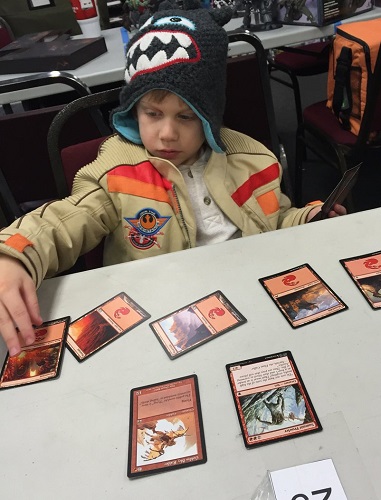
It’s also gotten to the point where John is six years old, very good at reading, and ready to fully learn how to play Magic. Before he could read, I’d shown him the game with vanilla creatures and lands, but frankly it just wasn’t that interesting and we put it aside. Now he’s a few games deep in the full game, and I’ve been having a fun and interesting time figuring out the best ways to teach him how to play.
Things like youth-FNM and the JSS are great macro ideas for growing the game, but many Magic players learn the simple “micro” way – a friend shows them the game and gets them hooked. They learn because someone took the time to show them.
However, giving your friend your Grixis Death’s Shadow deck and having him play against your Dredge deck is not going to provide a very engaging or encouraging experience.
In building decks to play with John, I was presented with very different challenges from when I am usually building decks. Usually I’m trying to attack every weakness, scrutinize every card, and prepare for a set metagame that I am trying to exploit. The goals in building the beginner decks were quite different:
Complexity – For a new player, especially one who is on the younger side, finding the correct complexity balance is incredibility important. Magic is an incredibly dense and complicated game that can be quite overwhelming, so it is important to choose cards that are mostly simple, but it’s also important to give a new player a taste of the complexities that lie beneath. It’s good to have some vanilla creatures and simple spells, but also important to sprinkle in a few more complex mechanics here and there to keep things interesting.
Balance – A very uncommon thing for a competitive player to have to do is to suppress the urge to build the best deck possible. The goal of building two decks to play and teach with are to have them be as balanced as possible, with the deck you are giving the new player perhaps getting a slight edge in power. You need to make sure both decks interact well with each other, and the cards present in both decks offer a lot of interplay. A deck full of Craw Wurms against a deck full of Doom Blades is not going to be a very fun experience. It’s also important to make sure the decks have an actual end-game; simple decks can often just devolve into mana-flooded long games where each player doesn’t really do much.
Flavor – Most alien to a competitive player is how important flavor is to a new player, especially younger players. When constructing the decks for John and me, selecting cards that looked fun is an important part of keeping the learning process clean and interesting. This was something that Wizards of the Coast nailed with their last few Core Sets, incorporating cards that are functionally flavorful and interesting like Turn to Frog. When the Thundering Giant rumbles in for an attack and suddenly finds itself turning into a tiny Frog that gets blocked and killed by a small Wizard, that’s a fun moment that’s easy to visualize.
Here are the decks I built for us:
Creatures (27)
- 1 Vine Trellis
- 2 Giant Spider
- 1 Thundering Giant
- 1 Kird Ape
- 1 Moss Kami
- 1 Trained Armodon
- 2 Civic Wayfinder
- 2 Frenzied Goblin
- 2 Streetbreaker Wurm
- 1 Indrik Stomphowler
- 2 Elvish Visionary
- 2 Garruk's Companion
- 1 Lumengrid Gargoyle
- 2 Elvish Mystic
- 1 Kalonian Tusker
- 1 Arborback Stomper
- 2 Wild Wanderer
- 1 Druid of the Cowl
- 1 Scaled Behemoth
Lands (23)
- 13 Forest
- 9 Mountain
- 1 Shivan Oasis
Spells (10)

Creatures (26)
- 1 Serra Angel
- 1 Man-o'-War
- 1 Staunch Defenders
- 1 Snapping Drake
- 1 Azure Drake
- 2 Wind Drake
- 1 Giant Octopus
- 1 Master Decoy
- 1 Kami of Old Stone
- 1 Loxodon Mystic
- 2 Venerable Monk
- 1 Crossbow Infantry
- 1 Aven Fisher
- 1 Vedalken Dismisser
- 1 Harrier Griffin
- 1 Deft Duelist
- 1 Welkin Tern
- 2 Omenspeaker
- 2 Palace Familiar
- 1 Cloudblazer
- 2 Herald of the Fair
Lands (24)
Spells (10)

While I wouldn’t recommend taking either of these decks to the Invitational next weekend, I would recommend building two decks similar to them and keeping them together. The next time a friend is interested in the game, or maybe your own child or niece or nephew, break them out and show them the best game ever made.
Growth Is Everything
Magic turns 25 years old this year, but also faces some of its toughest challenges yet.
This has been a very difficult year for Constructed formats, but aside from the various problems with the Standard format, Magic has also been struggling with a number of new competitors. Gaming as a whole has been growing steadily, but with direct competition from games like Hearthstone, Magic risks falling behind. Bringing new players into the game, and getting them hooked while they’re young, is extremely important.
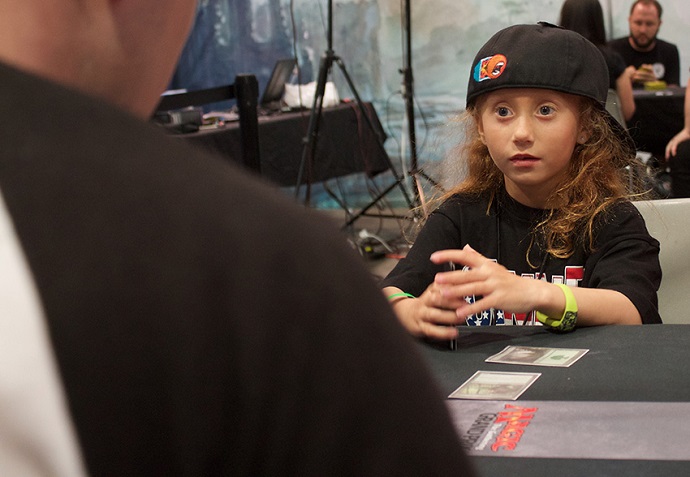
Seeing things like a young Dana Fischer winning Round 1 on camera at Grand Prix Las Vegas last weekend with her Modern Elves deck should be the norm, not the exception.
Please feel free to leave your thoughts in the comments, and don’t be shy about talking to your local store about these sorts of youth programs or sending an email to Wizards of the Coast!


